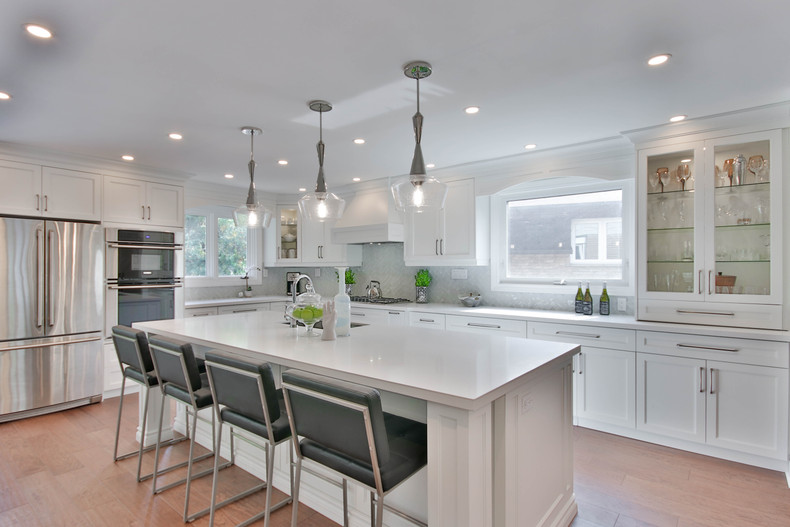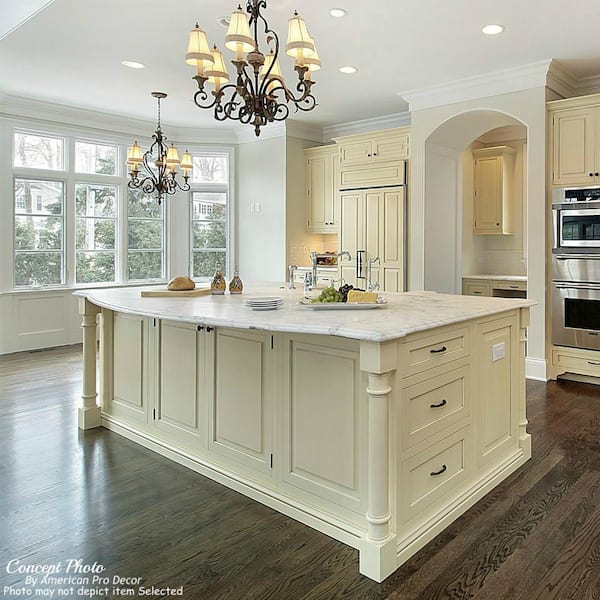Reinvent Your Kitchen's Look with Distinct Legs For Kitchen Island Accessories
Reinvent Your Kitchen's Look with Distinct Legs For Kitchen Island Accessories
Blog Article
Necessary Aspects to Think About When Choosing Legs For Kitchen Island
Picking the suitable legs for a cooking area island includes a mindful assessment of numerous factors that can substantially influence both performance and visual appeal. As we check out these elements, it ends up being clear that each choice can have far-ranging ramifications for the total kitchen experience.
Product Options
When picking legs for a kitchen island, comprehending the numerous material choices is crucial for achieving both aesthetic allure and architectural integrity (Legs For Kitchen Island). The option of product dramatically influences not only the longevity of the island but also its general style and capability
Wood is a popular option, using heat and adaptability. Strong hardwoods, such as oak or maple, provide toughness and can be tarnished or painted to match the kitchen decoration. Steel legs, often made from stainless steel or wrought iron, contribute a commercial and contemporary feeling while making certain durability and stability. These materials are immune to wear and can sustain substantial weight, making them ideal for larger islands.
Another alternative is crafted products, like MDF or plywood, which can be much more affordable while still providing a range of coatings. They may not offer the same degree of stability as solid timber or metal. Legs For Kitchen Island. Products such as acrylic or glass can create a modern look, though they may call for additional assistance to make sure stability.
Inevitably, the choice of material for kitchen area island legs ought to straighten with the preferred functionality and the total theme of the cooking area.
Design And Style

When taking into consideration design, the shape and coating of the legs are crucial. Tapered legs can supply a feeling of agility and sophistication, while thicker, extra durable legs can share toughness and security. Furthermore, the surface-- be it painted, discolored, or natural-- ought to complement the cabinetry and countertop products to develop a unified appearance.
Additionally, the style of the legs can likewise reflect personal preference. Custom-made or decorative legs, such as those including intricate carvings or distinct geometric shapes, can act as prime focus, adding character and individuality to the cooking area. Inevitably, the ideal choice will not just improve functionality yet additionally raise the aesthetic allure, making the kitchen area island a standout feature of the home.
Elevation Factors To Consider
Selecting the appropriate elevation for cooking area island legs is important, as it straight impacts both capability and comfort. The common elevation for a kitchen area island commonly ranges from 36 to 42 inches, lining up with usual counter top elevations.

It is likewise vital to account for users' choices and elevations. Customizing the elevation can make sure a comfortable experience for all relative, making the kitchen island an extra pleasurable and functional room.
Weight Support
Ensuring ample weight support for cooking area island legs is vital for both security and functionality. The cooking area island frequently offers several purposes, consisting of cooking, eating, and additional storage space, necessitating a durable assistance structure. When picking legs, it is essential to take into consideration the overall weight ability required based upon the island's planned use and the products that will certainly be put on it.
The selection of material for the legs plays a considerable duty in their weight-bearing capabilities. Strong timber, metal, and durable compounds generally offer premium strength compared to lighter products. In addition, the design of the legs-- whether they are directly, tapered, or have a pedestal kind-- can affect their ability to distribute weight properly throughout the structure.
Furthermore, the leg positioning need to be strategically prepared to improve security. Legs placed at the edges or with a wider base can better support much heavier lots. Constantly consult the producer's specs pertaining to lots restrictions to ensure that the legs can sustain the intended weight without jeopardizing security. In summary, choosing kitchen area island legs with appropriate weight assistance is crucial for developing a secure and useful cooking room.
Installation and Upkeep
Appropriate installation and upkeep of kitchen area island legs are essential for guaranteeing longevity and stability. This typically entails securing the legs to the island base using ideal fasteners, ensuring that the legs are degree and aligned.
When mounted, routine upkeep is required to maintain the integrity and look of the see this here legs - Legs For Kitchen Island. For wood legs, regular cleansing with a damp fabric and application of ideal wood gloss can protect against dampness damage and preserve their coating. Metal legs might require a mild cleansing service to eliminate oil and grime, complied with by a dry cloth to avoid rust formation
Additionally, inspect the legs on a regular basis for indicators of wear or damage, such as cracks or loose joints. Tightening screws or bolts as needed can likewise extend the life expectancy of the legs. By sticking to these installment and upkeep techniques, property owners can make certain that their kitchen island remains sturdy and visually appealing for years to come.
Conclusion

Visual coherence is critical in choosing the design and layout of legs for a kitchen island, as these aspects considerably affect the total ambiance of the space. Tapered legs can offer a feeling of agility and style, while thicker, more robust legs can convey strength and stability.Selecting the Recommended Reading suitable height for kitchen area island legs is vital, as it straight influences both capability and convenience. In recap, picking cooking area island legs with ample weight assistance is crucial for creating a useful and secure cooking room.
In conclusion, selecting legs for a kitchen island requires careful factor to consider of various aspects, including material options, design, elevation, weight support, and installation.
Report this page